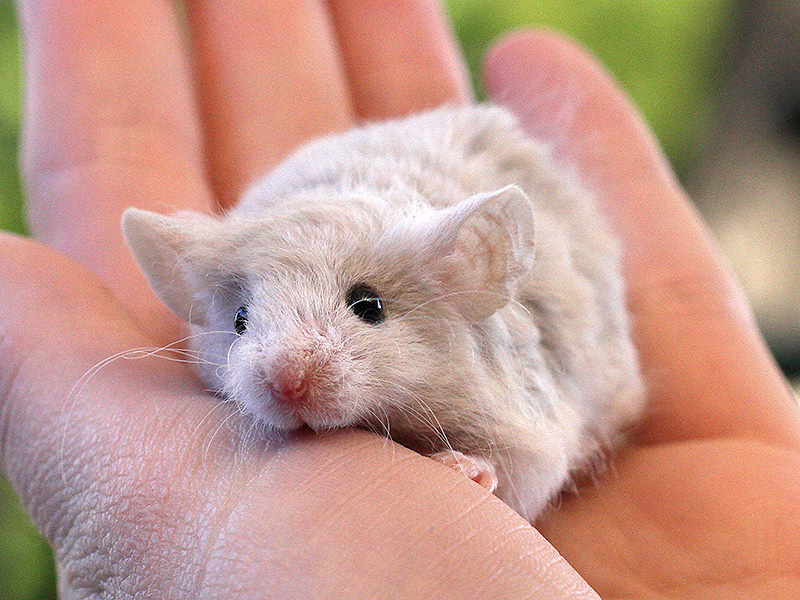Baby feeding all the time not sleeping
Baby Feeding Every Hour and Not Sleeping
Is your baby feeding every hour and not sleeping well? Learn how to handle cluster feeding and a baby still hungry despite frequent feedings.
You knew babies ate a lot, but this much? Over the last few days, your baby has constantly been eating every hour. Your breasts feel empty, which makes you wonder whether you’re not producing enough. Is he eating so often because he’s not getting enough milk?
And when he takes 20-25 minutes each nursing session, no wonder you can’t get any breaks.
Initially, you understood the demands of a newborn. But at this point, you’ve had it with feeding on demand and waking up multiple times a night. You miss having a full night of sleep, and find it unfair when babies born after yours are already sleeping in five-hour chunks.
And with you going back to work in a few weeks, you’re desperate to find a way to get your baby to sleep longer.
When your baby is feeding every hour and not sleeping
I was so sleep-deprived with my eldest (and later my twins) that I barely had time to even catch a quick catnap with his newborn schedule. When I’d hear him wake up, I’d peer at the clock, hoping that at least a few hours had gone by since the last time he ate. But nope—he had only fed an hour ago.
It didn’t help that falling asleep after he had just fed wasn’t always guaranteed either, and I’d be awake the entire time. I was so jealous of moms whose babies were already sleeping five to six hours straight, or weren’t feeding nearly as often as mine.
And as a first-time mom, I wondered whether I was doing something wrong that my baby was still feeding so frequently.
Frequent feeding shouldn’t be a permanent fixture in your life. For many reasons (cluster feeding all night, growth spurts), your baby will nurse often, but that shouldn’t be the case every day. Take a look at a few tricks I tried to lessen the amount of feeding sessions while still meeting my baby’s needs:
1.
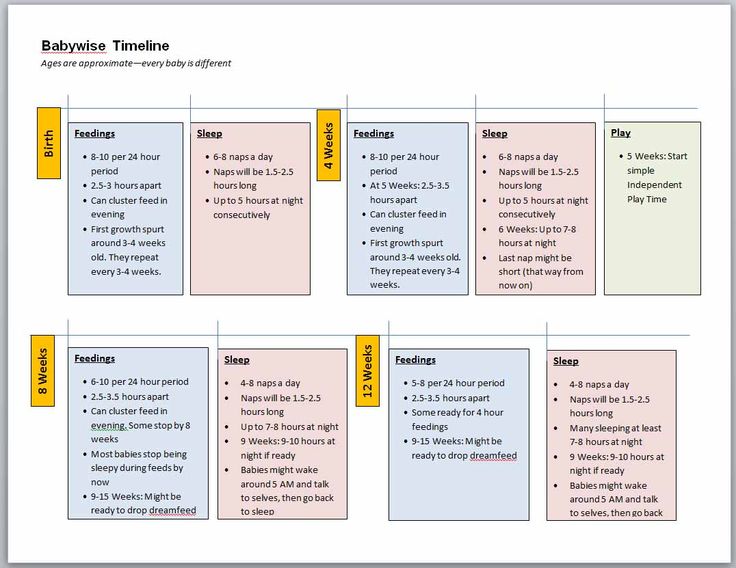 Make sure your baby is actually eating
Make sure your baby is actually eatingDoes it feel like you’re a human pacifier for your baby? Where he’s been nursing for an hour but is still hungry? That might be because he’s relying on nursing to fall asleep, and not to actually consume calories. After all, sucking helps him fall asleep, and nothing beats being in your arms.
How can you make sure he’s actually eating and not using you as a pacifier? Check his throat to see if it moves. If he were actually drinking, you’d see movement in his throat, just as yours would if you were to drink a glass of water.
Then, listen for a swallowing sound. He might not be eating if he’s not making any noises that indicate actually consuming the milk.
And finally, make sure he doesn’t fall asleep while he eats. He could be genuinely hungry but isn’t taking in as much as he could because he falls asleep. To keep him awake, tickle him, remove pieces of clothing, or change positions or burp him in the middle of a feeding.
Free download: Did you know that your baby’s awake time just might be affecting how well he sleeps or not? Join my newsletter and grab your copy of One Mistake You’re Making with Your Baby’s Awake Time—at no cost to you—and discover one mistake you may be making with his awake time.
Don’t make the same mistakes I did—help him fall asleep with this one simple trick! Download it below:
2. Offer a pacifier after feedings
Let’s say your baby does use feeding sessions to soothe himself to sleep. One trick you could try is to slip a pacifier in his mouth as he begins to doze off at the tail end of a feeding session.
Break his hold on your breast or bottle by inserting a finger in his mouth. This opens up the suction and allows you to pull away. Then, insert the pacifier in his mouth so that he can continue to suck on that instead of your breast or bottle.
He gets to continue to suck and soothe himself to sleep, but with a pacifier instead.
3. Dreamfeed before you sleep
You likely put your baby down to sleep before your own bedtime. Perhaps she’s asleep by 7:30pm, and you’re in bed at 9pm. One trick that can buy you some time is to dreamfeed her before you fall asleep.
Feed her as you usually do, then, before you head to bed, feed her once more. Yup, even if she’s asleep. She’ll have a full tummy, giving you some extra time for your first stretch of sleep. Because she’s still so drowsy, she’ll be able to fall right back to sleep.
Yup, even if she’s asleep. She’ll have a full tummy, giving you some extra time for your first stretch of sleep. Because she’s still so drowsy, she’ll be able to fall right back to sleep.
You’re able to feed her so she isn’t as hungry, but at a time of the night when you’re still awake (instead of groggy and sleep-deprived).
Get more tips on how to dreamfeed.
4. Work in shifts with another adult
One way to make sure you get a good chunk of sleep is to work in shifts with another adult, like your partner or parent. For instance, your spouse can be on “baby duty” from 7pm to 12am, giving you a good five-hour chunk to fall asleep. Then, you would cover the following hours, from midnight to 5am.
This way, both of you get a long stretch of sleep at night.
If you’re breastfeeding, prepare pumped bottles ahead of time so that another adult can also feed the baby. If need be, wake up once in the middle of your five-hour stretch to pump. You’re still waking up, but at least you can fall right back to sleep after you’re done.
You’re still waking up, but at least you can fall right back to sleep after you’re done.
Is your baby nursing for an hour and still hungry? Here’s what to do.
5. Let your baby fuss a little
Do you feel compelled to feed your baby the minute you hear him fuss and whine? See what happens if you give him a few minutes before you feed him.
You might find that what he was complaining about was pretty minor, and he’s able to settle himself back to sleep. He might not even be hungry to begin with, so he’s only nursing or feeding to soothe himself. Or he just might break the association of waking up and expecting to feed right away.
If you don’t want his cries to escalate, listen to how they sound. Hold off for a little if they sound like slight whimpers or small complaints. He might go back to sleep if you don’t jump to feed him the second he makes a sound.
6. Create a routine
We might not realize it, but babies pick up a whole lot more than we give them credit for. Even though they might not understand the words we say, they can certainly benefit from having a consistent routine. To start, they’ll know that feedings happen after certain activities.
Even though they might not understand the words we say, they can certainly benefit from having a consistent routine. To start, they’ll know that feedings happen after certain activities.
If you’ve been lenient with a routine, up the ante if your baby has been feeding every hour and not sleeping. Give him a bath, dress him in fresh clothes, and cap it with a long feeding session, for instance. Keep this up for a few days, and he’ll begin to expect bedtime feedings after you go through your routine.
Learn how to create a baby nighttime routine.
7. Use a swaddle
Disclosure: This article contains affiliate links, which means I will earn a commission—at no extra cost to you—if you make a purchase.
Like with a pacifier, feedings can be one of the ways your baby relies on to fall asleep. When he wakes up, he doesn’t know how to put himself back to sleep just yet, and cries to be fed once again.
But if he’s wrapped in a swaddle, he’s less likely to wake up and cry. He loves the familiar snugness of being in a swaddle, which will help him sleep longer. Besides a swaddle, you can also use white noise to muffle loud or sudden sounds that can startle him awake.
He loves the familiar snugness of being in a swaddle, which will help him sleep longer. Besides a swaddle, you can also use white noise to muffle loud or sudden sounds that can startle him awake.
Conclusion
It’s never easy when your baby has been feeding every hour and doesn’t sleep in long stretches. Should that happen, make sure that he’s actually eating when he’s feeding. Offer a pacifier, especially if he just needs to suck to soothe himself to sleep.
Dreamfeed to fill him up before you go to bed, and consider working in shifts with another adult to get a long chunk of sleep. Let him fuss a little instead of feeling compelled to feed him at the first whimper. Create a routine to set expectations, and use a swaddle (and white noise) to extend his sleep.
Frequent feedings shouldn’t happen every night. Now you know what you can try to get your baby to feed between longer stretches!
Get more tips:
- What to Do When Your Baby Wants to Breastfeed Constantly
- When Breastfeeding Hurts (Even with a Good Latch)
- 6 Ways to Handle Your Newborn Constantly Feeding
- Baby Wakes Up Every Hour? Must-Know Tips for Parents
- 12 Things to Do When Your Newborn Fights Sleep
Don’t forget: Join my newsletter and grab your copy of One Mistake You’re Making with Your Baby’s Awake Time—at no cost to you:
How to Handle a Newborn Constantly Feeding
A newborn constantly feeding can exhaust any parent. Here’s how to handle the cluster feeding, especially when you’re breastfeeding.
Here’s how to handle the cluster feeding, especially when you’re breastfeeding.
I just about had it.
The sore nipples from a bad latch, the cluster-feeding sessions, the leaking—I was over it. I felt glued to my baby and shot dagger eyes at anyone who suggested feeding him the second he’d fuss. I was ready to give up.
And that was just five days in with breastfeeding.
But beyond the physical pain, breastfeeding for many moms is especially hard when your newborn is constantly feeding. Your baby wants to nurse all the time, hungry and unsatisfied despite the frequent nursing.
For instance, within a two-hour time frame, she’s already nursed a whopping four times.
As a first-time mom, you’re curious whether this is normal. If other babies also want to eat within minutes of having been just fed. You wonder whether it’s even possible to overfeed a newborn or if yours is eating too much—especially since she’s constantly wanting to be fed.
How to handle your newborn constantly feeding
Rest assured friend, you’re not alone. And more importantly, your newborn constantly feeding is normal and common.
Known as newborn cluster feeding, frequent feeding is her way of getting your body to produce enough milk, especially during a growth spurt. Think of it as nature’s way of increasing your breast milk supply. After all, the more demand for milk, the more your body will produce.
Plus, she likes to be near you not just for food but for comfort. You smell good, you’re the perfect temperature for her body, sucking is soothing—it’s no wonder she simply wants to be snuggled and fed.
That said, I don’t blame you if you feel exhaustion and even—let’s be honest here—resentment of being the only one able to feed her. I totally understand that feeling of being tied down, and the lack of freedom that a newborn constantly feeding can bring.
So, here are a few practical ways of coping with cluster feedings, both to see if she can gradually wean from them, as well as how to cope in the meantime.
1. Make sure your newborn is emptying the breast
Did you know that breast milk comes in stages? During the first few minutes, your newborn is drinking the fore milk (or the lighter part of the milk). Afterward, she drinks the hind milk (the fattier, more filling part).
If she’s only nursing a few minutes on each side, she might not be getting the hind milk, and ends up hungrier sooner than later.
Instead, make sure she’s emptying the entire breast so she gets both kinds of breast milk from each side. This will help fill her up so she’s able to go longer between feeds.
A simple way to make sure she empties the breast? Don’t let her sleep on the job. Feed her after she wakes up, not before she’s about to sleep, so that she doesn’t doze off during feeding.
Besides making sure she’s emptying the breast completely, offer her both of them as well. That way, not only is she getting both kinds of breast milk, but she’s also getting double the serving.
Free resource: Do you struggle with getting her to sleep? Her awake time just might be affecting how well she sleeps or not. Join my newsletter and get One Mistake You’re Making with Your Baby’s Awake Time—at no cost to you.
Don’t make the same mistakes I did—help her fall asleep with this one simple trick! As one parent said:
“I LOVE your content and want you to know you’re helping so many of us.” -Jordin Edwards
2. Burp between switching sides
Do you find that your baby fusses during feedings, cutting them short? She could be uncomfortable from taking in gas while she eats.
One simple way to eliminate gas is to burp her between switching sides. Simply hold her upright and allow any gas to escape, as well as the food to digest down. Not only are you helping her release gas, you’re also holding her upright, which can prevent spitting up food.
Get more tips on how to burp a baby that is hard to burp.
3. Watch for excessive spit-up
Your newborn could also be extra hungry if she’s not actually taking in the food she had just eaten. In other words, she’s spitting the food right back up.
Like we talked about, holding her upright (especially after a feeding) can help avoid excess spit-up. Make sure you’re also holding her at an angle when you breastfeed to prevent her from feeding flat on her back.
If all else fails, talk with her pediatrician to further discuss health issues or even medicines that can help her stop spitting up so much.
4. Pay attention to weight gain and wet diapers
Your doctor or lactation consultant will know your baby is just fine by making sure she’s gaining the weight she’s supposed to. If you feel like she’s still not feeling satisfied despite frequent feedings, have your doctor check whether her weight gain.
You’ll also want to pay attention to how many wet diapers she goes through. While weight gain is a better gauge of how well your baby is feeding, seeing enough wet diapers can also reassure you that she is, in fact, taking in the milk.
5. Feed on demand
The newborn stage, particularly the early days and weeks, is not the time for a strict feeding schedule. This is when your baby can take a five-hour nap, only to take a 20-minute one next. And the same is true for when and how long she sleeps as well.
While she might cry because of a soiled diaper or uncomfortable pajamas, more often than not, your baby’s hunger is the likely cause. Breast milk digests easily, which means she can be hungrier earlier than formula-fed infants.
And don’t worry that you’re setting her up with “bad habits” by feeding her when she’s hungry. Feeding on demand doesn’t mean she’ll always expect to eat frequently. Instead, she’ll eventually develop her own routine and flow, especially the larger her stomach gets (and the more food she can take).
For now, feed her when she’s hungry, knowing that this is a temporary and important stage in her growth. She knows what her body needs, and this is her way of letting you know she needs to eat.
Learn how to handle a baby feeding every hour and not sleeping.
6. Find a comfortable feeding position
Disclosure: This article contains affiliate links, which means I will earn a commission—at no extra cost to you—if you make a purchase.
Perhaps the simplest way to handle your newborn constantly feeding is to make it as comfortable as possible. Sometimes we feel “stuck” in our positions, unable to move around like the rest of the family, making us even more frustrated.
But you can make the most of it by having a comfortable feeding station. Start by using a good nursing pillow and back support. Keep often-used items within arm’s reach, from tissue paper to snacks. Use it as an opportunity to watch a movie, listen to a podcast, or read a book.
And consider creating several feeding stations throughout the house. That way, you won’t feel alone and isolated in, say, your bedroom, while everyone else is enjoying dinner on the other side of the house.
Conclusion
That first month with my newborn was rough. I must have looked online to read the benefits of breastfeeding every single day just to keep going.
But despite the first few days or weeks, breastfeeding does get easier and will happen in longer stretches. Your baby will feel less fragile and can nurse without a pillow. Your nipples will adjust and you won’t need ointment for long. And most importantly, she won’t cluster feed as frequently as she does now.
Still, in the meantime, you can make this stage as easy and smooth as possible. Make sure she’s emptying each breast so she’s getting both kinds of breast milk (as well as emptying both breasts). Burp between switching sides so she doesn’t fuss because of gas and digestive issues.
Watch for excessive spit-up so you know she’s keeping her food in. Pay attention to how many wet diapers she goes through, and confirm with the pediatrician that she’s gaining enough weight. Feed when your baby’s hungry, not from a set schedule.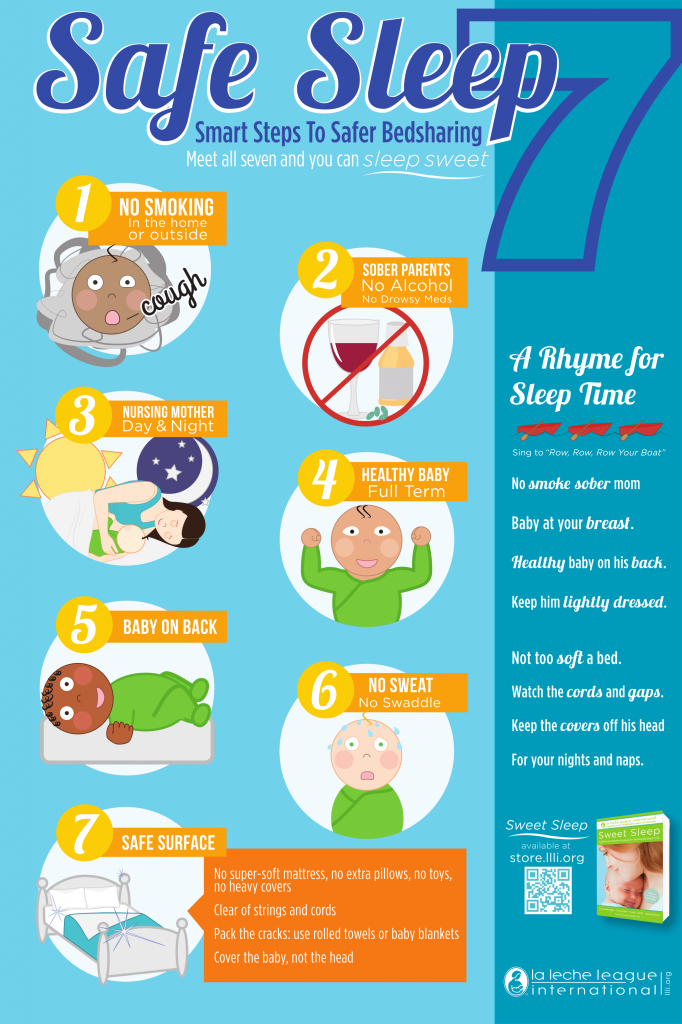
And finally, find a comfortable feeding station (or a few) so that you’re at least as happy and content as possible.
Don’t worry, mama—she won’t always feed this frequently. Especially if, like me, you’re just five days in and ready to throw in the towel.
Get more tips:
- 5 Tips to Stop the Pain After Breastfeeding
- Burping a Newborn After Breastfeeding: Necessary or Not?
- 6 Ways Dads Can Support Breastfeeding Moms
- 12 Breastfeeding Secrets Every Mom Should Know
- How to Burp a Sleeping Baby
Don’t forget: Join my newsletter and get One Mistake You’re Making with Your Baby’s Awake Time below:
The baby does not sleep without a breast
How to separate food and sleep? What if the child falls asleep only under the breast or with a bottle in his mouth? Dad and grandmother can put him to bed without feeding, and with mom, the child requires the performance of those actions that he is used to, and attachment inextricably links two processes: eating and sleeping, falling asleep and sucking.
Baby only sleeps with breast in mouth - how does this affect sleep?
At first, all mothers are touched when a newborn sucks sweetly, falling asleep at the same time. The baby is so calm and happy lying at his mother's chest! Six months pass quickly enough, the sweetness of tenderness also dissolves. Mom begins to understand that the child now sleeps only with the breast in her mouth, the chances of putting him to bed without feeding are almost zero. Own fatigue has accumulated over half a year of sleepless nights and is ready to develop into a nervous tremor at the thought that another nightly marathon of constant feedings is ahead. Mom feeds, overcoming fatigue, sacrificing her own interests for the sake of the child. Are the best interests of the child in such a situation taken into account?
Feeding that turns into sleep is absolutely justified if the baby is not even a month and a half old. But from three months the structure of sleep changes, melatonin begins to be produced. From now on, the baby's brain cannot reach deep sleep if it is involved in the sucking process. From six months, the sucking reflex is rebuilt into a sucking habit. Habits can be good or bad. Some can make life more pleasant and harmonious, others can limit freedom and harm health. As a rule, a person wants to get rid of the latter. In the same direction, we must act when talking about the habits of the child. If the child wakes up between sleep cycles, and he does not yet know how to fall asleep on his own without your help (for example, motion sickness or chest), then your task is teach your baby to fall asleep without your active participation. Try not to do for the child what he can already handle on his own.
From now on, the baby's brain cannot reach deep sleep if it is involved in the sucking process. From six months, the sucking reflex is rebuilt into a sucking habit. Habits can be good or bad. Some can make life more pleasant and harmonious, others can limit freedom and harm health. As a rule, a person wants to get rid of the latter. In the same direction, we must act when talking about the habits of the child. If the child wakes up between sleep cycles, and he does not yet know how to fall asleep on his own without your help (for example, motion sickness or chest), then your task is teach your baby to fall asleep without your active participation. Try not to do for the child what he can already handle on his own.
What techniques can be used to separate food and sleep?
1) Trust a close relative to put your baby to bed from the age of four months. The child needs the experience of falling asleep not only with the mother. At this point, the child should not be deceived and try to hide from his field of vision without warning. Let a loved one come in advance, play with the child, then the mother gives complementary foods, offers breasts, only after that gives the opportunity to dad or grandmother to finish the process. Mom should not doubt at this moment, because. the baby is already tired, wants to sleep, a reliable person is next to him, he will help him fall asleep and feel safe.
At this point, the child should not be deceived and try to hide from his field of vision without warning. Let a loved one come in advance, play with the child, then the mother gives complementary foods, offers breasts, only after that gives the opportunity to dad or grandmother to finish the process. Mom should not doubt at this moment, because. the baby is already tired, wants to sleep, a reliable person is next to him, he will help him fall asleep and feel safe.
2) Believe me, the main comfort and stability that a child needs is you, your peace and care, and not your breast or a bottle of milk.
3) Feed your baby during the day in a calm, familiar environment. Minimize distractions - TV , telephone, communication with other people. This is the time of your close communication with the baby.
4) In order to break the connection between food and sleep, introduce another element of the ritual between them. For example, when you are feeding, give your baby a soft toy in your hand, tell a story about it using simple sentences and onomatopoeic words. You can repeat the story twice. After a certain time, say that it’s time for “this bear” to sleep, let the baby show how to fall asleep. Turn off the night light. Explain that mom is nearby, shush. If the child burst into tears, then take it in your arms, soothe, but after that put the baby back in the crib.
For example, when you are feeding, give your baby a soft toy in your hand, tell a story about it using simple sentences and onomatopoeic words. You can repeat the story twice. After a certain time, say that it’s time for “this bear” to sleep, let the baby show how to fall asleep. Turn off the night light. Explain that mom is nearby, shush. If the child burst into tears, then take it in your arms, soothe, but after that put the baby back in the crib.
IDEAS:
Reading a fairy tale can be used. While feeding in the chair, read a book at the same time, trying to interest the child, then take the breast or bottle, finish reading, put the baby to bed, turn off the light.
You can feed right after the bath while the baby is still in the towel, then put on pajamas and go to bed.
5) Between eating and sleeping, one more relative may join. After feeding, dad can read a fairy tale or hold it in his arms until he calms down, he will definitely not be tempted to feed the child, because mom comes out of the bedroom with a breast and a bottle. Most importantly, survive the first 3 to 4 days of training so that the child has the experience of falling asleep without feeding. At this moment, do not leave the child alone in the room, in every possible way calm him down with your voice, short-term strokes. In a week, the child will forget the past way of falling asleep with the help of the breast.
Most importantly, survive the first 3 to 4 days of training so that the child has the experience of falling asleep without feeding. At this moment, do not leave the child alone in the room, in every possible way calm him down with your voice, short-term strokes. In a week, the child will forget the past way of falling asleep with the help of the breast.
6) Do not turn off the light during feeding, so it is less likely that feeding will be associated with sleep in the baby's mind.
7) At night, pause feeding from 12 noon until 4 or 5 am. Avoid frequent night feedings, do not feed more at night than during the day. If the baby wakes up an hour after the last feeding, let him drink some water from the cup (this reduces the habit of sucking). Do not let your baby sleep with the breast in their mouth.
8) Start feeding in the morning after 6:00.
9) Spend more time communicating with your child during the day. And he will not have an overwhelming desire to be with you at night.
And he will not have an overwhelming desire to be with you at night.
10) Go to self-sleep learning. Remember that a crib is not for storing toys, it's time for a child to sleep in it. It is safer for the baby, who is actively learning new motor skills. Child first daycare, and then put him in his bed for night dreams. The child should get to bed sleepy, but not sleeping.
Food and Sleep Habits for Sleeping Melatonin Sleep Training0001
get a general routine
What do most women do when their baby is asleep? Someone rushes to cook, someone begins to hastily clean the apartment, iron, wash - there are always plenty of things to do in the family. But in vain. You can do household chores even when the baby is awake, but he definitely won’t let you sleep. Therefore, if a son or daughter falls asleep, drop everything and go to bed with the child. There is no perfect order or dinner is not prepared? You can do all this later, when you rest, and, by the way, you will most likely spend much less time and effort.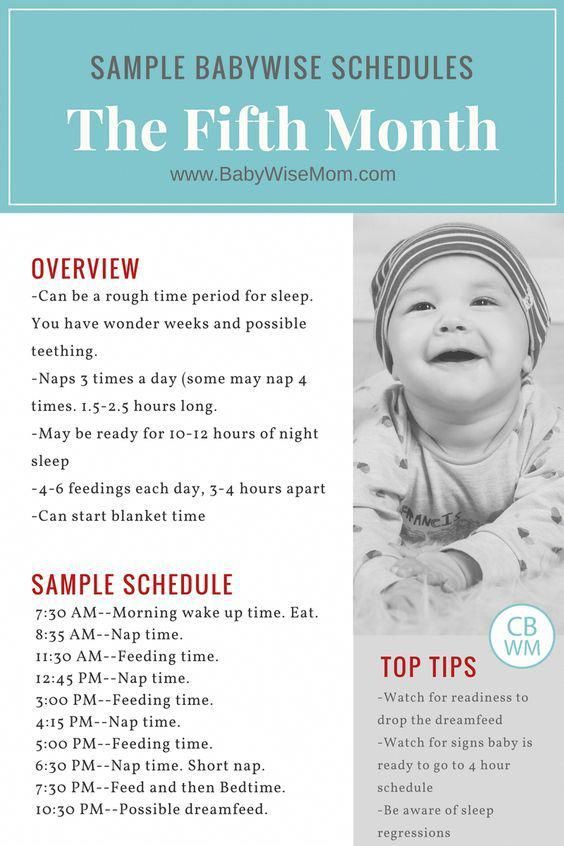 Therefore, the first rule of mom's regimen: sleep when the baby sleeps. To feel normal, a woman (especially a nursing mother) must sleep both at night and during the day. So adjust the general regimen of the day: you can adapt to the child’s sleep, or, on the contrary, you can adjust the child’s sleep to your routine (although this will be more difficult to do).
Therefore, the first rule of mom's regimen: sleep when the baby sleeps. To feel normal, a woman (especially a nursing mother) must sleep both at night and during the day. So adjust the general regimen of the day: you can adapt to the child’s sleep, or, on the contrary, you can adjust the child’s sleep to your routine (although this will be more difficult to do).
accept help
Use volunteers as often as possible to babysit, walk, or simply feed. And here the help of the husband, grandparents will be invaluable. Do not trust the baby mother-in-law? Do you think that dad will not be able to entertain the baby for a couple of hours? Worried that grandpa will get lost with the baby while strolling around the house? In vain. Your loved ones are adults, they wish both you and the baby only the best and are unlikely to harm him in any way. At most, a diaper is buttoned crookedly, an extra blouse is put on the baby, or they give him the wrong nipple.
If possible, make arrangements with your family so that they can babysit at least two or three times a week, giving you a couple of hours to sleep and rest. By the way, for this you can invite a nanny. And again - no household chores at this time, only - sleep!
sleeping with the baby
Co-sleeping has many advantages: the mother does not have to get up, wake up, go to the crib, get the baby out of it. She can feed the baby and at the same time almost never wake up: after all, the baby will find the breast on its own. Yes, and many children sleep only with their parents - in order to fall asleep, some babies need to feel the familiar smell and warmth of a loved one. This method has both its supporters and opponents, but in any case, if you choose to sleep together, you need to ensure the safety of the child. You can not put the child on the edge of the bed - he can turn around and fall to the floor; you can not put it next to the parent pillow - the baby may turn unsuccessfully and his breathing will be disturbed.
And it's best not to put the baby in the same bed with adults, but simply move the crib to the parent's bed, after removing the side rail from it (today there are even special cribs for sleeping together). So the child will feel the closeness of mom and dad, and parents will sleep peacefully, without worrying about his safety.
“Stock up” with sleep
Scientists have found that lack of sleep or insomnia is fully compensated by a full rash preceding it (or subsequent after it). And if so, then you can “stock up” on sleep. A couple of times a week (well, or one for sure) you need to arrange a day for yourself when the dream lasts 8-9hours per day. Here again, relatives or a nanny will come to the rescue. You can select once a week when you sleep all night, and dad gets up at night for the baby. True, this is convenient when the child is bottle-fed or at least agrees to drink expressed mother's milk from a bottle at night.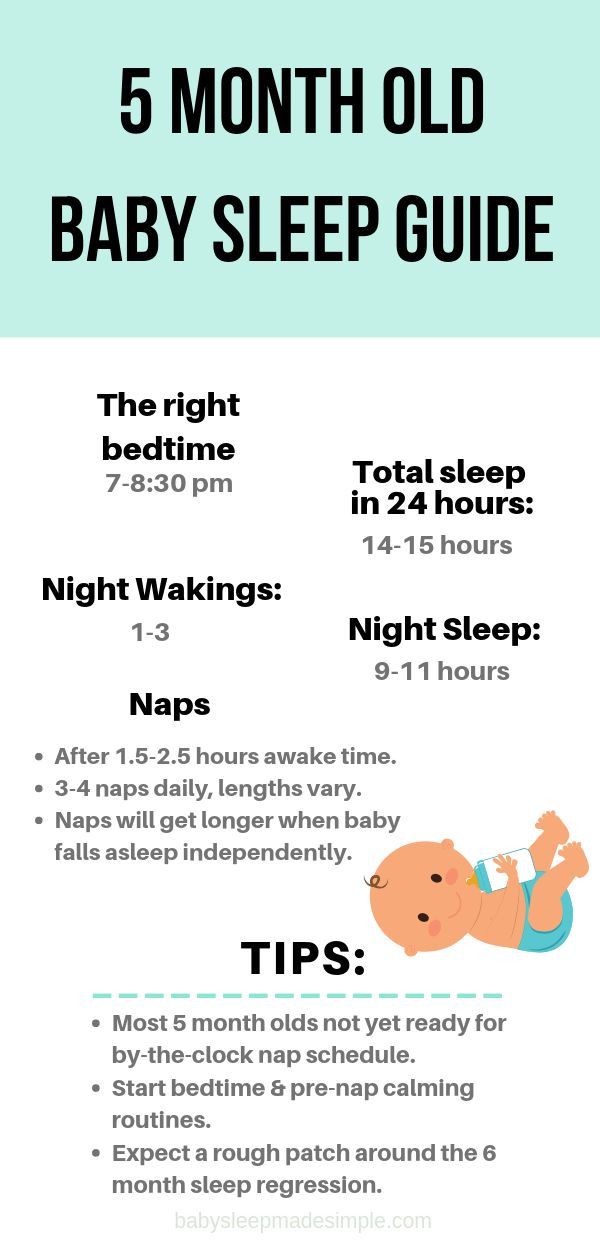 If this is not possible, then you need to agree with your husband that, for example, on the weekend he takes the child and works with him for a couple of morning hours, and you fill up the missing time. Or let your grandmother (nanny) come in the morning, who will also let you make up for a night's sleep.
If this is not possible, then you need to agree with your husband that, for example, on the weekend he takes the child and works with him for a couple of morning hours, and you fill up the missing time. Or let your grandmother (nanny) come in the morning, who will also let you make up for a night's sleep.
go to bed together at night
Usually, after putting her baby to bed, a mother either rushes to finish the day's chores, or tries to find time for herself (surf the Internet, read a book, watch TV, get a manicure). But it is the first three to four hours of sleep at night that children sleep best. Take note of this and go to bed at night at the same time as your baby. Otherwise, you have not yet had time to fall asleep (or just fell asleep), as the baby woke up for night feeding or just like that. As a result, you will get not only a shortened night's sleep, but for sure at night the baby will wake up a couple more times and interrupt it.
put the child to bed early
As a rule, an adult who goes to bed early wakes up earlier. But in children there is no such pattern. Therefore, do not be afraid that today, having fallen asleep before 9 pm, tomorrow the baby will wake you up at dawn. On the contrary, the later the child falls asleep, the worse and more restless he sleeps. And just early laying gives a more complete and prolonged night's sleep. And this is exactly what a tired mom needs! But in order to establish such a daily routine, all family members will have to try. But then it becomes much easier for them.
Try to improve your routine and sleep more, and the whole family will feel much better. Even with a small child, it is possible not to feel sleep deprivation. Try it and see for yourself.
If this arrangement suits all members of your family, practice co-sleeping. This is a real salvation for mothers whose children often wake up at night.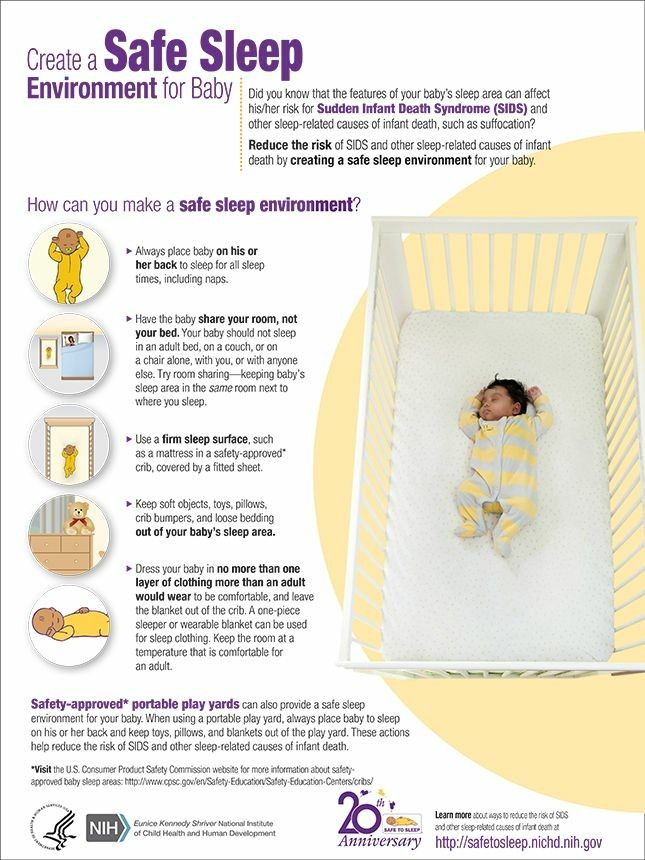 Sleep deficiency disrupts the formation of serotonin in the body - a biologically active substance, which is also called the hormone of happiness, calmness and good mood. As a result, a person deprived of normal rest constantly experiences irritability and a feeling of depression
Sleep deficiency disrupts the formation of serotonin in the body - a biologically active substance, which is also called the hormone of happiness, calmness and good mood. As a result, a person deprived of normal rest constantly experiences irritability and a feeling of depression
Try to instill a regular sleep-wake schedule in your child. This will make your day more organized and make you less tired.
Attention! Prices for services in different clinics may vary. To clarify the current cost, select a clinic
Clinical Hospital MD GROUPClinical Hospital Lapino-1 "Mother and Child"Children's Clinic KG "Lapino" on New Riga (branch)Clinic "Mother and Child" KuntsevoClinic "Mother and Child" SavelovskayaClinic "Mother and Child" South-WestClinic "Mother and Child" » Novogireevo
All directions
01.










